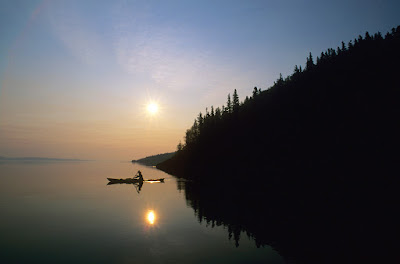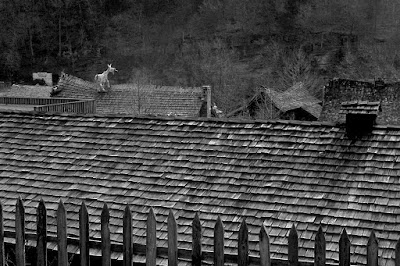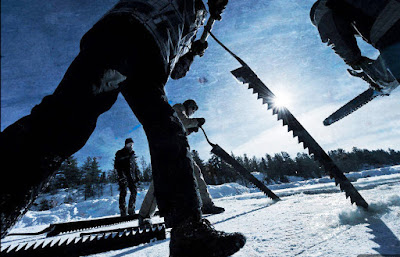 |
| (Click on image to enlarge) |
I visit Iceland as often as I can. I adore this country. The nature is
raw, assorted ecosystems abound, and until recently you could go for
days and not see anyone. One of the more popular and accessible stops
along the coast is Skogafoss. Skogafoss is a lovely waterfall pouring
over a cliff with all the rage of Niagara.
I was traveling with a small group and we made our way down towards the falls. The sun broke out and I reached for my camera as a double rainbow began to emerge. Then, out of nowhere, we heard river rocks exploding as three young men from behind us raced past screaming their way to the rainbow.
Many photographers would've been pissed having people dart into the scene. Just moments earlier it was a picture defining pristine. Let's face it, photog's love rainbows and most prefer them without the visual pollution of people cluttering the scene.
Yet, in this situation I was thrilled to see these youngsters going for it. Their excitement towards the waterfalls, playing under the rainbow, was pure joy. And, that's part of nature photography too. People fly fishing, enjoying a favorite swimming hole, climbing the hard face of a speckled granite wall, or canoeing over a glassy lake. I had time for only three frames before they were too far away and the sun faded.
On this day, they weren't the only ones savoring the joy of nature photography.
I was traveling with a small group and we made our way down towards the falls. The sun broke out and I reached for my camera as a double rainbow began to emerge. Then, out of nowhere, we heard river rocks exploding as three young men from behind us raced past screaming their way to the rainbow.
Many photographers would've been pissed having people dart into the scene. Just moments earlier it was a picture defining pristine. Let's face it, photog's love rainbows and most prefer them without the visual pollution of people cluttering the scene.
Yet, in this situation I was thrilled to see these youngsters going for it. Their excitement towards the waterfalls, playing under the rainbow, was pure joy. And, that's part of nature photography too. People fly fishing, enjoying a favorite swimming hole, climbing the hard face of a speckled granite wall, or canoeing over a glassy lake. I had time for only three frames before they were too far away and the sun faded.
On this day, they weren't the only ones savoring the joy of nature photography.






